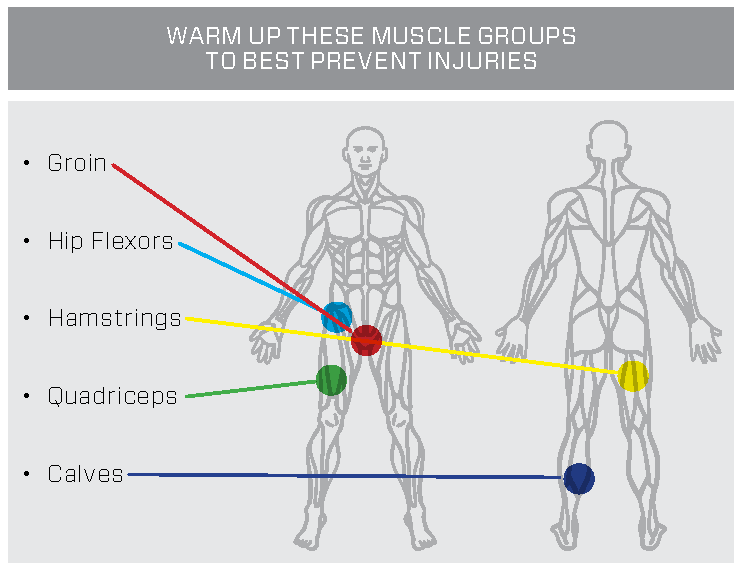
Pre Activity Warm Up
Before every training session or game, it is vital that each player undergoes a rigorous pre-activity warm up routine. This routine gets especially critical as the player gets older and into their teenage years.
The warm up routine will eventually include a soccer ball and should focus mainly on preparing the body for physical exertion. the warm up routine should take at least 20-30 minutes.

Periodization
Periodization is the control of the workload throughout a week, month or season, in order to maximize growth and development and reduce the chances of injury and fatigue.
Each training session and activity will have a level of physical demand attached to it. It is the role of the coach to manage the work to rest ratio in order to give them the correct amount of time to take part in each activity.
A competitive game should have a demand level of 8-10 out of 10. A practice will range from 4-8 depending on which day of the week it is on and how many times you practice during the week.
For example:
- Player A plays a game on a Saturday, but has training on a Monday, this will only give the body and mind 48 hours rest in between. So Monday's practice should be light to moderate.
- Player B has a tournament weekend coming up and plays 3 or 4 games over the weekend. Player B also has practice Monday, Tuesday & Thursday.
Player B should not practice at all on Monday and Tuesday should be light to moderate.
Mental recovery is also important, each player needs to recover their mind and allow for family time and other fun activities.
A recovery day (Monday) can still be used at soccer practice in order to let the mind recover from the demand of the weekend games. Coaches should incorporate fun activities into their practices in order to do this such as:
- Soccer Tennis
- Soccer Kickball
- Fun Small Sided Games
Concussion Awareness
Concussion in youth sports is one of the most common injuries and also one of the most important to recognize right away.
Every coach and team manager at FC Westlake is required to undergo Concussion Protocol training each year in order to refresh themselves with the signs to look out for, and the steps to take if a player is suspected of having a concussion.
- Can’t recall events prior to or after a hit or fall.
- Appears dazed or stunned.
- Forgets an instruction, is confused about an assignment or position, or is unsure of the game, score, or opponent.
- Moves clumsily.
- Answers questions slowly.
- Loses consciousness (even briefly).
- Shows mood, behavior, or personality changes.
- Headache or “pressure” in head.
- Nausea or vomiting.
- Balance problems or dizziness, or double or blurry vision.
- Bothered by light or noise.
- Feeling sluggish, hazy, foggy, or groggy.
- Confusion, or concentration or memory problems.
- Just not “feeling right,” or “feeling down”.
Signs and symptoms generally show up soon after the injury. However, you may not know how serious the injury is at first and some symptoms may not show up for hours or days. For example, in the first few minutes your child or teen might be a little confused or a bit dazed, but an hour later your child might not be able to remember how he or she got hurt.
You should continue to check for signs of concussion right after the injury and a few days after the injury. If your child or teen’s concussion signs or symptoms get worse, you should take him or her to the emergency department right away.
